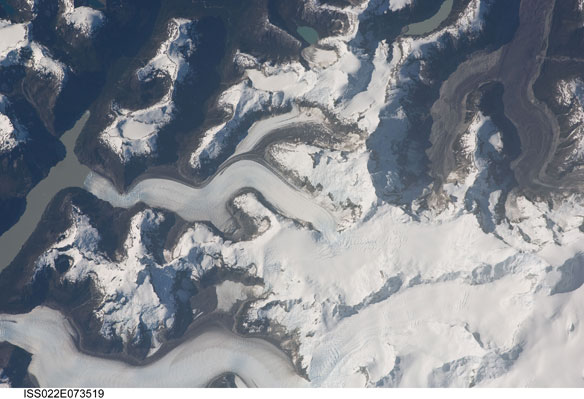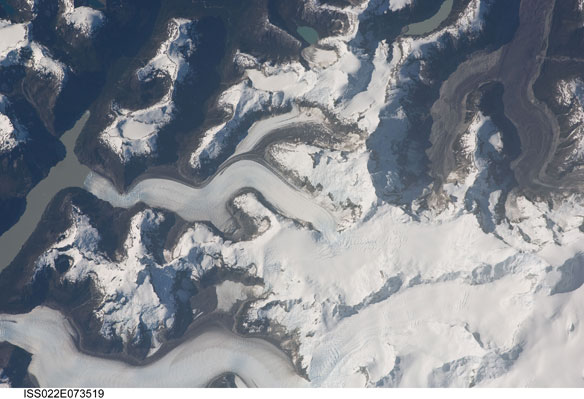
The Gualas Glacier, now 20 miles long with an area of 46 square miles, is one of 70 glaciers in the Northern Patagonian Icefield. The glaciers are fed by water that originates in the Pacific Ocean and is transported by westerly winds. The moist air hits the Andes Mountains and drops up to 33 feet of precipitation a year on the west side of the mountains. Image source: NASA Earth JSC
Excerpts;
Like many mountain glaciers, the Gualas Glacier in the Patagonian region of Chile has retreated fast during the past century in the face of climate change. But not only for the reason you’d first suspect.
The glacier’s retreat—5.5 miles over the past 110 years and 1.7 miles in the past 25 years—is not just being driven by melting caused by warming air temperatures. Instead, less snow is falling atop the glacier to replenish the river of ice flowing to the sea.
An international research team led by Sébastien Bertrand, a postdoctoral scientist at Woods Hole Oceanographic Institution (WHOI) and the University of Ghent, came to this surprising conclusion after extensive geological and historical detective work…









